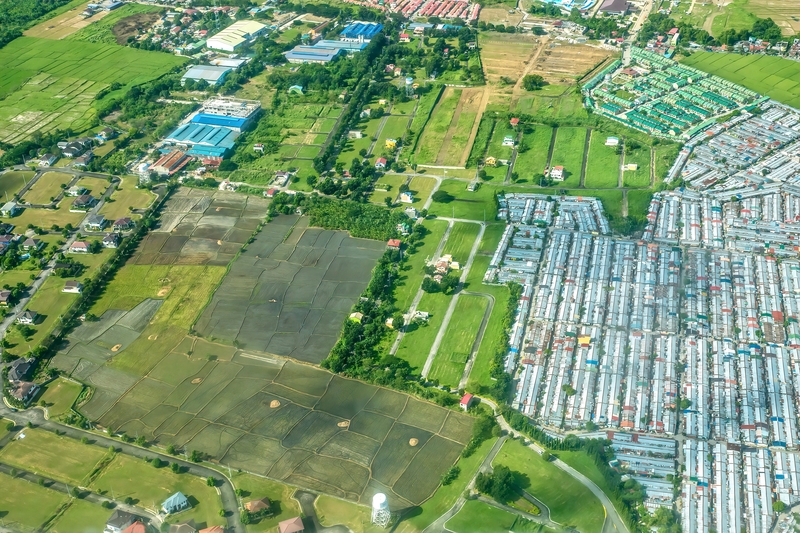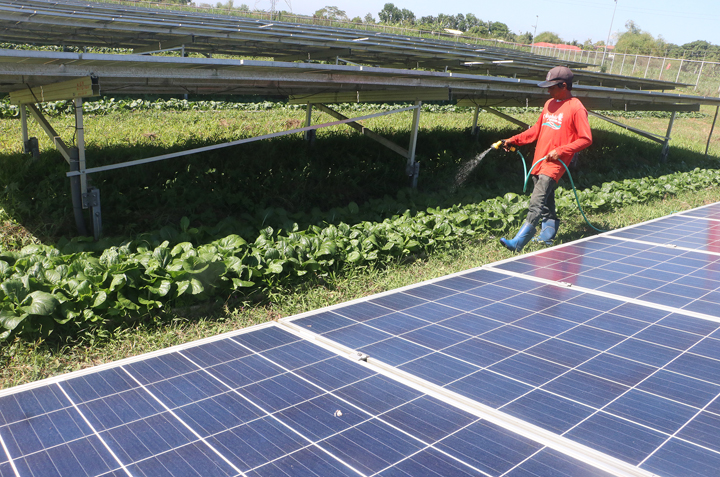Seven of over 2,200 identified wetlands in the world as listed by the Ramsar Convention are in the Philippines.
These are the Puerto Princesa Subterranean River National Park in Palawan; the Tubbataha Reefs National Marine Park in Sulu; the Agusan Marsh Wildlife Sanctuary in Agusan del Sur; the Naujan Lake National Park in Oriental Mindoro; the Olango Island Wildlife Sanctuary in Cebu; the Negros Occidental Coastal Wetlands Conservation Area in Negros Occidental; and the Las Piñas-Parañaque Critical Habitat and Eco-Tourism Area (LPPCHEA). Among these, only LPPCHEA is in an urban area—in Metro Manila.

The importance of having wetlands is an indicator of a healthy environment. For LPPCHEA, it means more—it will be constructed as a park to attract tourists and visitors alike.
“Our wetlands park is divided into two, the Las Piñas side and the Parañaque side, and we are all overlooking the Manila Bay,” Sen. Cynthia A. Villar said at a news conference at the Senate while opening an exhibit showcasing the wetland wonders of the Philippines.
“We have 30 hectares of mangrove forest, 82 species of birds, three of them are endangered,” Villar said.
Envisioned as a very important tourist attraction in Metro Manila, the LPPCHEA wetlands is planned out to be constructed with facilities for Filipinos and tourists to visit and appreciate nature up close.
A fight for nature in Metro Manila
Villar has been leading the fight to protect and conserve the last remaining coastal wetland in Metro Manila. Being the chairman of the Senate Committee on Environment and Natural Resources, her work has been focused on preserving the natural resources of the country.
In 2011 Alltech Contractors Inc. was issued an environmental clearance certificate (ECC) for the Parañaque-Las Piñas Coastal Bay Project Land Reclamation that has caused an uproar among environmentalists and conservation groups.
Villar, during the press conference, assured the members of the media the company has already given up. In January Environement Secretary Regina Paz L. Lopez has canceled the ECC of the company due to its potential harm to the environment.
“The company has informed us that they will not be doing the reclamation anymore. So the Supreme Court [SC] justice, who was handling the case, said we’re okay and they [company] are planning to do it [reclamation] in the Bulacan area already,” Villar said. “This is victory.”
Flooding is a major problem in the coastal areas of Metro Manila. Villar, in an interview with the BusinessMirror, said, “If we are not going to stop reclamation, Las Piñas, Parañaque and Bacoor [in Cavite] will be flooded.”
“I believe this would really be an attractive tourism destination for the people, especially in Metro Manila,” Villar said, as she pointed out the only sites Filipinos usually go to in the metropolis are malls. She said the LPPCHEA is a good alternative and, at the same time, it is the right time to preserve the area.
More than 30 hectares of the area’s mangrove forest can stop a storm surge and “we have 82 species of birds recorded already and 47 of which are migratory”, Rey Aguinaldo of the Department of Environment and Natural Resources-National Capital Region (DENR-NCR) and the focal person for LPPACHEA told the BusinessMirror at the sidelines of the news conference.
“These [birds] come from China, Korea, Russia and Siberia, and they go down here.” One proof is the existence of the Siberian ruby-throat bird that is found in LPPCHEA during migration season, he said.
Three endangered species are also found in LPPCHEA—the Philippine duck, Chinese egret and the black-winged stilt.
Villar told Senate newsmen that the Chinese egret is very important. “We have 1,000 of the 100,000 remaining [Chinese Egret] in the world,” she said. That is 1 percent of the whole world population of the bird. Mudflats in lagoons are also deemed important, since it is a place where both birds and local fishermen can benefit from.
“When it is low tide and the water recedes, there is a lot of food for the birds,” Aguinaldo told the BusinessMirror.
Besides, fishermen can catch bigger fishes. “The lagoon is a spawning ground for fishes for the fishermen in Manila Bay,” Villar said. “If there’s no spawning ground, there will be no big fishes in Manila Bay,” she added.
Conserving the last coastal frontier in Manila
LPPCHEA was enlisted as a Wetland of International Importance by the Ramsar Convention in March 2013. With this, a motion to preserve the area has been acted upon, and plans for facilities and environmental activities were planned.
Different organizations and agencies are set to work to complete the LPPCHEA Wetland Park. Villar Sipag, the non-governmental foundation created by the Villar family, will spend for the construction of the Wetland Centre Wave worth P10 million to P20 million by October this year.
“This [Wetland Centre Wave] is at the entrance,” Villar said. “It is where the people who will visit the wetland go and gather.” It will be the entrance facility of the park, where comfort rooms and parking areas will be constructed.
“We would like to finish it by October 2017 because there will be a convention here sponsored by the United Nations,” Villar said, referring to the Convention on the Protection of Migratory Animals.
Besides Villar Sipag, the DENR will also develop nature trails and the boardwalks in the area, which will cost around P10 million.
The Department of Tourism is set to give a P45 million for the development of the site as ecotourism. Various facilities—such as a center complex, view towers, bird hides and even a bambusetum, or a garden of bamboo plants—are being planned. An office for the DENR will also be constructed to monitor the site.
Aguinaldo said guides would assist students, bird photographers and the public to help them identify the birds and provide guidelines on bird watching.
“The whole Manila Bay area is a bird site. It has been existing before Metro Manila was developed,” Aguinaldo said. “We will develop the trails, so people can have access inside the wetlands and could see the trees and birds.”
Villar has petitioned the SC for a Writ of Kalikasan to protect the habitat for reclamation. She emphasized that the Manila Bay portion of LPPCHEA is a cove.
“If it is reclaimed, we will have a problem with flooding because there’s no place for the water to go out,” she said. “Some portions of Manila Bay are open seas and water flows out there directly.”
Aguinaldo said he has coined LPPCHEA as the “last coastal frontier in Metro Manila”.
The LPPCHEA is the only habitat that will have a wetland museum in the Philippines.
“It is a wetland that is very near the airport in Metro Manila so many people can visit the area,” Villar told the BusinessMirror. She said other wetlands are hidden and far, “so we can do a wetland museum [in Metro Manila].”
Image credits: Roy Domingo, Stephanie Tumampos

































